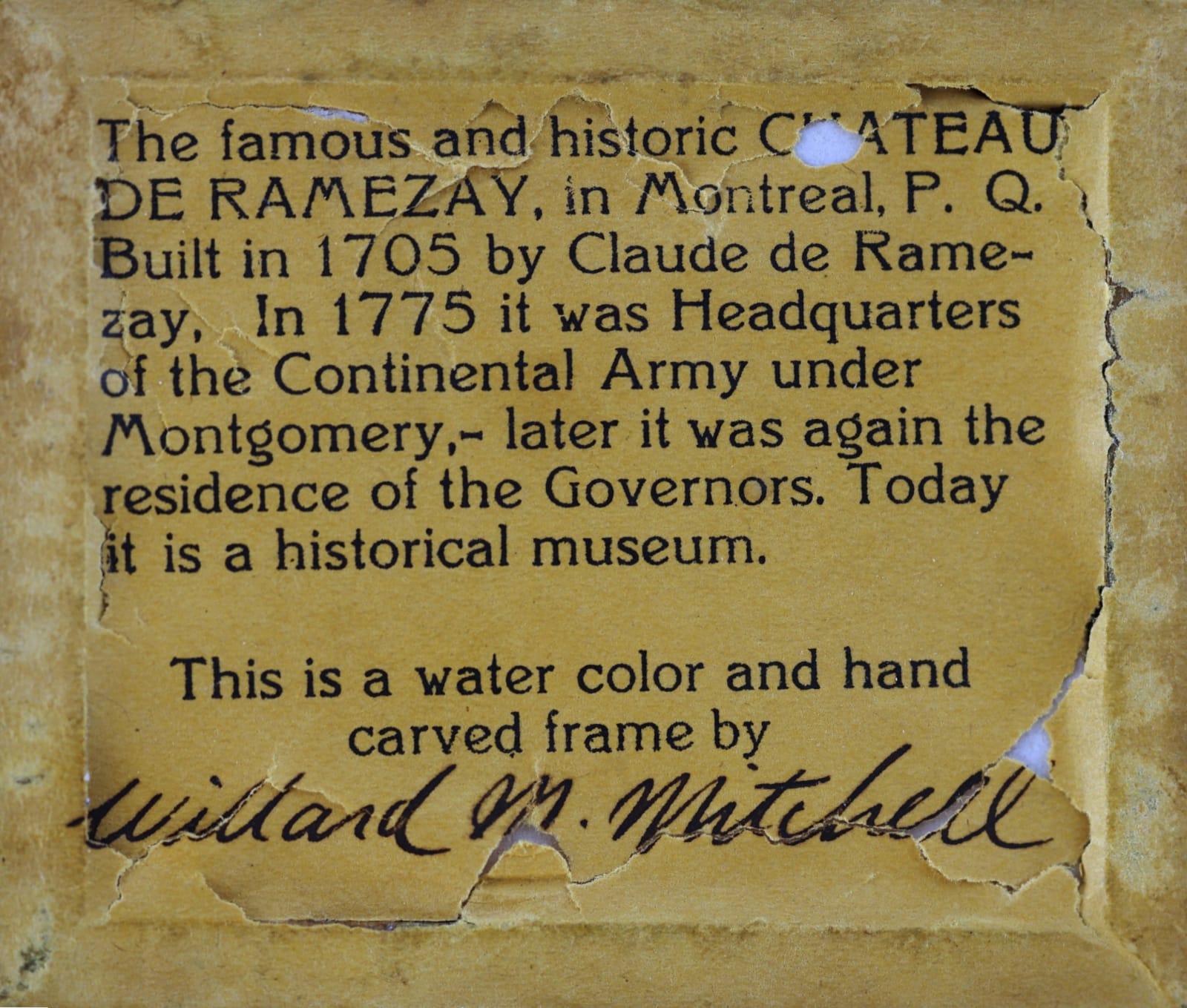Willard Morse Mitchell Canadian, 1879-1955
Further images
This miniature artwork by Willard Morse Mitchell (1879–1955), titled “The Château de Ramezay, Montreal”, is a delicately executed watercolour depicting one of Canada’s oldest and most historic buildings. It is accompanied by one of Mitchell’s distinctive printed and signed labels, which authenticates both the artwork and the hand-carved frame he personally crafted.
The watercolour portrays the Château de Ramezay, a celebrated landmark in Old Montreal built in 1705 by Claude de Ramezay, who served as Governor of Montreal. Mitchell captures the long, low stone structure with its distinctive steep orange roof and round corner tower, details that remain emblematic of early French colonial architecture in Quebec. The building is framed by a rhythmic row of slender, leafless trees, suggesting late autumn or early winter, while several small figures in coats and hats walk along the snowy street, animating the quiet historic scene.
Mitchell’s technique—using precise yet fluid strokes of transparent colour—renders the architecture with simplicity and warmth. The pale sky and cool shadows on the ground enhance the crisp atmosphere, while the fine black outlines and dabs of blue and ochre bring the scene to life in his signature style.
The printed label affixed to the reverse reads:
“The famous and historic CHATEAU DE RAMEZAY, in Montreal, P.Q. Built in 1705 by Claude de Ramezay. In 1775 it was Headquarters of the Continental Army under Montgomery,—later it was again the residence of the Governors. Today it is a historical museum.
This is a water color and hand carved frame by Willard M. Mitchell.”
This label provides both historical context and provenance, confirming Mitchell’s authorship and craftsmanship. It notes the building’s significance during the American invasion of Canada in 1775, when General Richard Montgomery used it as his headquarters, and its later conversion into a museum—a role it still holds today.
Mitchell’s miniature watercolours, typically measuring only a few inches across, were painted during the 1920s–1940s in Montreal and sold as collectible keepsakes. Each piece combined artistry, local pride, and narrative charm. The Château de Ramezay exemplifies his approach: a blend of careful architectural depiction and nostalgic atmosphere, inviting viewers to reflect on Canada’s French colonial heritage through the eyes of a craftsman devoted to preserving its landmarks in miniature form.





